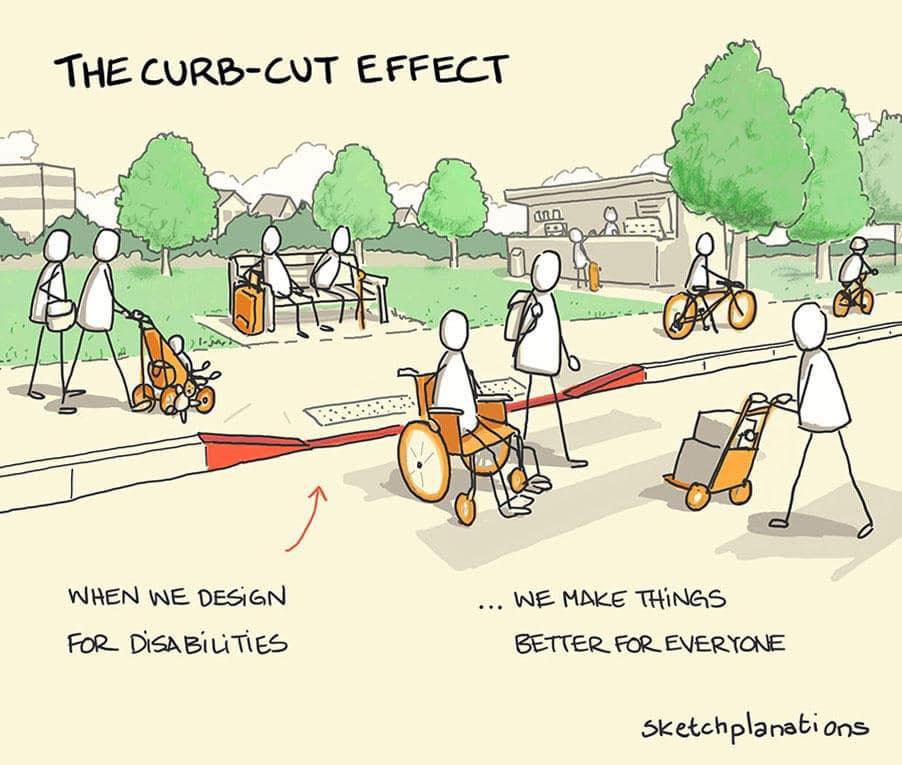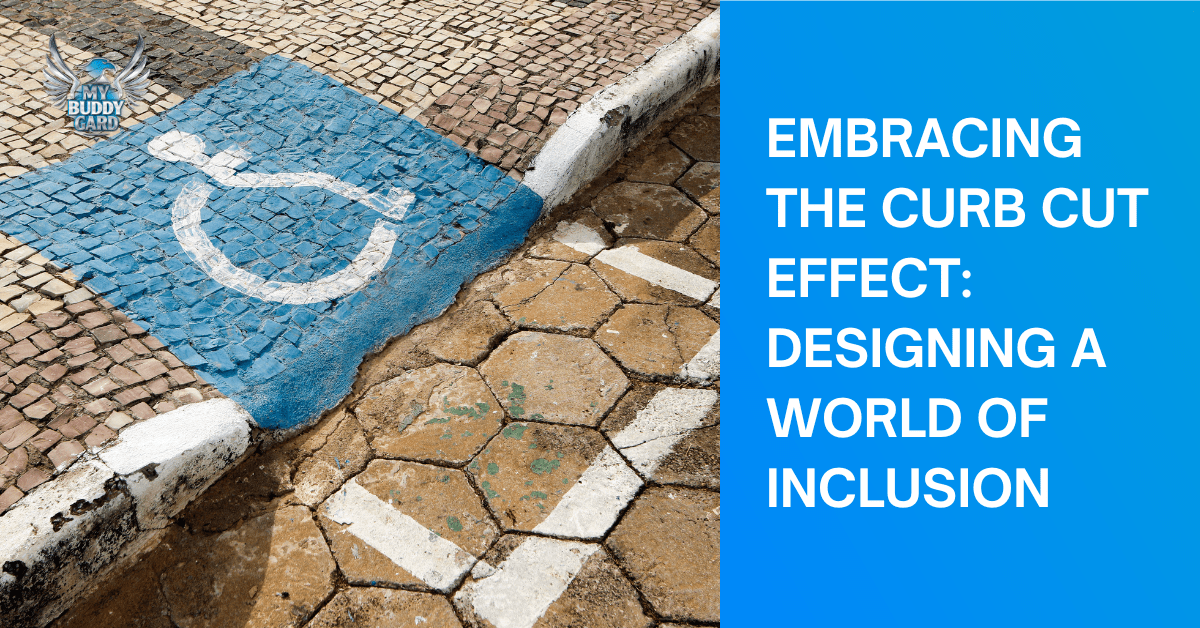In a world that is becoming increasingly aware of the importance of inclusivity and accessibility, the concept of “The Curb Cut Effect” is gaining momentum. Originally designed to assist individuals with mobility challenges, this simple yet profound idea has far-reaching implications for creating a society where everyone, regardless of ability, can navigate and engage seamlessly. The Curb Cut Effect teaches us that designing with inclusivity in mind benefits not only those with disabilities but society as a whole.
Understanding The Curb Cut Effect:
The term “Curb Cut” refers to the sloped transitions from a sidewalk to the street, initially introduced to assist individuals using wheelchairs. The unintended but powerful consequence of this design was that it didn’t just benefit people with mobility challenges; it made life easier for everyone. Parents with strollers, travellers with luggage, and even cyclists found the Curb Cut to be a welcome addition, demonstrating that inclusive design benefits a broader spectrum of individuals.

Applying the Concept Beyond Physical Spaces:
While the origins of The Curb Cut Effect are rooted in the physical environment, its principles extend beyond just ramps and sidewalks. It’s a mindset that challenges us to rethink how we approach design in various aspects of life. From technology and digital platforms to education and employment, the idea is to create a world where barriers are minimized, and inclusivity becomes the norm.
- Inclusive Education: The Curb Cut Effect can revolutionise the education system, making learning environments more accessible for students with diverse needs. Implementing inclusive teaching practices and providing a variety of learning materials can enhance the educational experience for everyone.
- Accessible Technology: Embracing inclusive design in technology ensures that digital platforms and applications are user-friendly for everyone. Features such as voice commands, screen readers, and customisable interfaces benefit not only individuals with disabilities but also those facing temporary challenges or simply seeking convenience.
- Employment Opportunities: Businesses that prioritise inclusivity in their workplaces not only cater to a broader talent pool but also foster a culture of acceptance. The Curb Cut Effect encourages employers to provide reasonable accommodations, creating a work environment where diversity is celebrated, and every employee can thrive.
- Cultural and Recreational Spaces: Museums, theatres and recreational spaces are an integral part of our society. By applying The Curb Cut Effect, these spaces can become more welcoming to individuals with varying abilities. Accessible exhibits, sensory-friendly events, and thoughtful design can enhance the overall experience for everyone.

The Curb Cut Effect teaches us that embracing inclusivity is not just about meeting the needs of a specific group but about creating a society where everyone benefits. By prioritising accessibility and removing barriers, we foster a world that values diversity and recognizes the inherent worth and dignity of every individual. As we continue to advance, let us champion The Curb Cut Effect, ensuring that our designs, policies, and attitudes reflect a commitment to a more inclusive and compassionate world. After all, in a society that values everyone, we all stand to gain.

